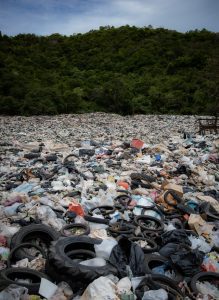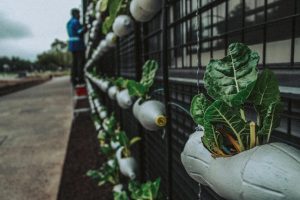Circular Economy, the key for sustainable development

The essence of this concept comes from ‘rubbish.’In nature, organic waste from animals and plants falls to the ground, where decomposer organisms (bacteria and fungus) convert it into inorganic material used as nutrients. That is, organic matter is recycled and returned to the system from which emerged. The problem, however,started with humans and their interactions with nature.
Unfortunately, human beingshave expanded their ability to generate and accumulate litter.Over time, the problem has worsened as we increase our consumption, develop massive constructions, and delve into the non-stop use of technology devices. With evolution, we havebeen disconnectingfrom -and circumventing – the original recycling system from nature.

Circular economy vs. linear economy
Traditionally, when building a device (for example, a mobile or a mixer), the first resources and raw materials are extracted from nature (metals, minerals, wood, among others). These supplies then become products, after processing, refining, assembling, and packaging them. When the products’ useful life ends, they (or their packaging) end up aswaste or rubbish. This system istraditionally called a linear economy.
In other words, the resources that we extract from nature go through a linear productionprocess, from raw materials to waste.
Even if we have lived under a linear economy scheme for centuries,it has proven to havedevastating environmental consequences. For instance, an unsustainable production process does not take into consideration its ecological impacts, such as the liberation of greenhouse gasses, ecosystems degradation (both terrestrial and marine,) the loss of biodiversity, and the declining quality of human health.
A sustainable alternative to the linear economy has emerged. It aims to manage and reduce these adverse effects. It is called circular economy.

The core economic concept revolves around transforming the linear flow of the production process (resource-product-waste) to a circular and closed flow (resource-product-recycled resource).
The circular economy is committed to the continual optimization of resources and elimination of waste to extend products’ useful lifeand provide them a second lifespan. It aims to reduce the use of raw materials, and reuse goods, pieces, and packaging as much as possible during the complete manufacturing and supply chain. It is a more environmentally friendly model based on prevention, share, reuse, repair, reduce, and recycle.
Action plan for the circular economy in Europe
In December 2015, the European Commission presented its Action Plan for promoting the circular economy in Europe. The strategyadvisesdifferent measures, within a 2020 goals agenda,on which European states can act to advance in a circular economy.
The suggested actions managevarious stages of the product lifecycle (design and production, consumption, waste management, and thereintroduction of materials and sub products into the economy.) Additionally, it evaluates five priority areas forEurope: plastics, food waste, construction and demolition, biomass and biologically based products, andcritical raw materials.
The Commission published a report in 2017 regarding the status of the Action Plan, and the general overview of the actions already in place and future goals.
The Spanish context
Back in November 2016, Madrid hosted the Spanish National Environment Congress (CONAMA,) during which the circular economy came out as one of the country’sleading environmental challenges.
The Foundation COTEC for innovation published in 2017 the first report about the state of affairs of the circular economy and how is developing in Spain. This same foundation created a short film in collaboration with #WHYMAPS to generate awareness and educate the general public on the subject. The reception of the campaignwas outstanding, reaching over 35,000 views in the first 24 hours.
Additionally, the star-up Ecoembes created TheCircularLab in 2017. It wasone of the first innovation centers of its kind -focused on circular economy- in Europe. The lab works witha collaborative investigation structure, studying, testing, and bringing together best practices and innovation lines in the field of packaging and recycling. They work with companies to promote and implement eco-design projects and the manufacturing of more sustainable packaging. In 2018, for example, the lab presented a bio bio container made from vegetable waste (from potatoes and carrots.)The ultimate goal is to reach a society model in which recycling, and sustainability are inherent to our everyday life.
Recently, the Government began the drafting of the Spanish Strategy of Circular Economy. As for today, this 2019 plan is still under development.
Looking at the future
A circular economy describes a closed system of interactions between the economy and the environment. Moving from linear to circular economy requires a paradigm shift. It makes us more aware that resources are finite,and it challenges us to innovate and moderate our impact on the environment.
It is critical to creating policies and promote political, fiscal, and educationalreforms to transform and improve the current production and consumption systems.
The circular economy represents an excellent opportunity for economic development. It contributes to the creation of new and more sustainable jobs, as well as it reduces dependence on non-renewable resources and the production of negative externalities.However, a commitment from the whole society is urgently needed.
Lydia de la Cruz Amo
Master in Corporate Social Responsibility from CMI Business School
